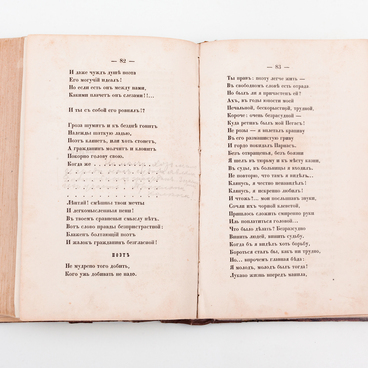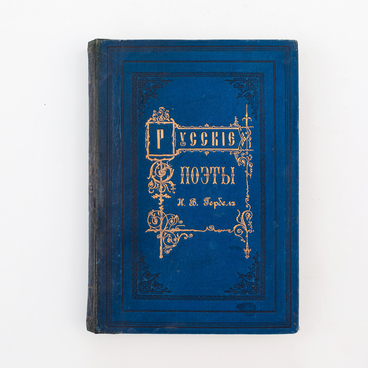The icon ‘Savior the Almighty’ made its way into the living room only on February 1, 1992, although the museum was opened back in 1929. At that time, a special commission under the General Directorate of Scientific and Museum Institutions [Glavnauka], when discussing the future memorial in Ulyanovsk, decided that it was not necessary to recreate the exact interiors of the family home. In particular, the idea of displaying icons was abandoned. Anna Ulyanova-Elizarova, Lenin’s sister, supported this decision.
When in the 1990s the museum staff discovered that in fact, the icons had been in the Ulyanovs’ house, they brought the icon ‘Savior the Almighty’ from the All-Union Art Production Association named after Vuchetich. An unknown artist painted the icon in tempera on a curved wooden board in the last third of the 19th century.
The icon depicts Jesus Christ waist-length. He is dressed in a red chiton and a dark-blue cloak; in his left hand, he holds open a sacred book, and with the fingers of his right hand, he makes a blessing gesture. The artist outlined a circular nimbus with a symbolic cross depicted inside it with several lines on a gold background. In orthodox iconography, such nimbuses were called baptized and were used only in representations of Christ.
The broad margins on either side of Jesus contain passions, independent parts of the icon that supplement or elaborate on the subject of the central part, the middle ground. On this icon, the master depicts the Venerable Zosima and Savvatiy Solovetsky in full-length, half-turned-looking mode facing Jesus.
The Venerable Savvatiy is to the right of Christ, holding a rolled-up scroll. In 1429, in search of the quietest place to pray, Savvatiy made his way to the uninhabited Great Solovetsky Island. Together with German the monk, he built a cell where he lived for six years. In 1435, German departed for Onega for supplies, and in his absence, Savvatiy died. In 1436 the hermit Zosima arrived on the island. He built a cell half a mile from Herman. Gradually other hermits joined him, and soon two wooden churches and a monastery appeared on the island.
The master painted the Venerable Zosima to the left of Christ, with an open scroll in his hands. The text of the scroll on the various icons differs, but the most widespread version reads: ‘Do not mourn, brethren, but according to this understand’. Zosima, Savvatiy, and German are considered to be the founders of the Solovetsky monastery.
When in the 1990s the museum staff discovered that in fact, the icons had been in the Ulyanovs’ house, they brought the icon ‘Savior the Almighty’ from the All-Union Art Production Association named after Vuchetich. An unknown artist painted the icon in tempera on a curved wooden board in the last third of the 19th century.
The icon depicts Jesus Christ waist-length. He is dressed in a red chiton and a dark-blue cloak; in his left hand, he holds open a sacred book, and with the fingers of his right hand, he makes a blessing gesture. The artist outlined a circular nimbus with a symbolic cross depicted inside it with several lines on a gold background. In orthodox iconography, such nimbuses were called baptized and were used only in representations of Christ.
The broad margins on either side of Jesus contain passions, independent parts of the icon that supplement or elaborate on the subject of the central part, the middle ground. On this icon, the master depicts the Venerable Zosima and Savvatiy Solovetsky in full-length, half-turned-looking mode facing Jesus.
The Venerable Savvatiy is to the right of Christ, holding a rolled-up scroll. In 1429, in search of the quietest place to pray, Savvatiy made his way to the uninhabited Great Solovetsky Island. Together with German the monk, he built a cell where he lived for six years. In 1435, German departed for Onega for supplies, and in his absence, Savvatiy died. In 1436 the hermit Zosima arrived on the island. He built a cell half a mile from Herman. Gradually other hermits joined him, and soon two wooden churches and a monastery appeared on the island.
The master painted the Venerable Zosima to the left of Christ, with an open scroll in his hands. The text of the scroll on the various icons differs, but the most widespread version reads: ‘Do not mourn, brethren, but according to this understand’. Zosima, Savvatiy, and German are considered to be the founders of the Solovetsky monastery.



